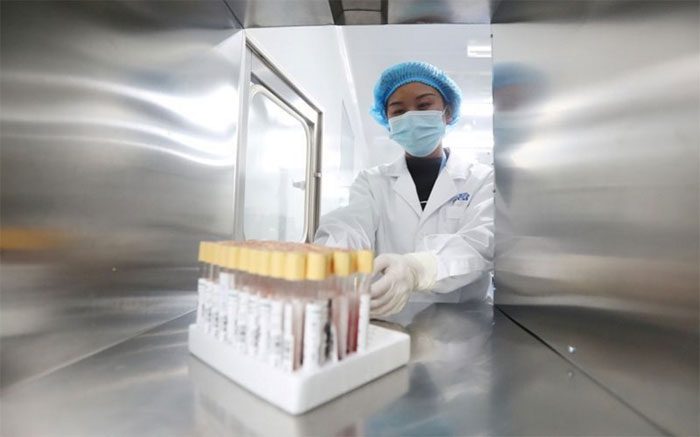A group of Chinese researchers has launched an international initiative aimed at increasing the number of healthy years in human life by proposing the implementation of a new phase of the Human Genome Project (HGP).
Accordingly, based on the milestone achievements that resulted in the sequencing of the first human genome two decades ago, the researchers have proposed to sequence the genomes of over 1% of the world’s population – equivalent to 80 million people from more than 100 countries.
The data and results obtained will be used to extend the average human lifespan by improving medical methodologies such as screening for genetic diseases and diagnosing rare illnesses, while also contributing to the development of the increasingly growing field of precision public health.

Researchers propose to sequence the genomes of over 1% of the world’s population. (Photo illustration: SCMP).
Not stopping at just 1%
According to the proposal of the Second Human Genome Project (HGP2), published in an editorial in the journal Cell Research on September 11, this concept refers to “the use of advanced technologies, data analysis, and interventions to prevent disease, enhance health, and improve healthcare service delivery at the population level.”
Scientists from research institutes in 15 countries are participating in the study: China, Australia, Belgium, the UK, France, Greece, India, Italy, Japan, Malaysia, Russia, Singapore, Turkey, the USA, and Vietnam.
“HGP2 will certainly not stop at 1% of the world’s population. However, by achieving the goals set for the first 1%, we believe that HGP2 will initiate a long-term paradigm shift towards global precision public health,” the research team stated in the article.
“This will open the door for the rest of humanity to use their genomes to live healthier and longer, realizing the vision of HGP,” the research team added.
The HGP was launched in 1990 under the leadership of American geneticist Francis Collins, with funding from the U.S. Department of Energy and the National Institutes of Health (NIH).
The NIH website describes the HGP achievement completed in 2003 as: “An international effort to sequence the 3 billion letters of DNA in the human genome is considered one of the most ambitious scientific endeavors of all time, even more so than splitting the atom or sending humans to the moon.”
This effort involved scientists from institutes in the UK, China, France, Germany, and Japan, as well as U.S. institutes outside of the NIH. They were referred to as the International Human Genome Sequencing Consortium.

A technician working in the BGI gene testing laboratory. (Photo: Reuters).
In China, BGI Group, a gene research company based in Shenzhen, was established in 1999 as a genetic research center to participate in the HGP.
Five scientists from BGI, along with two researchers from Fudan University and Peking University, are members of the international group of 21 that is backing the HGP2 proposal.
Chinese scientists stated that their goal is to transform the project into a “global research alliance” that supports international collaboration.
“Efforts should be made to avoid redundancy, if possible, to provide maximum support for existing scientific initiatives; this research alliance will promote collaborative science rather than competition,” the Chinese scientists said. “We hope that this proposal will inspire exemplary national initiatives to be organized and collaborated around the principles of HGP2 soon.”
The researchers indicated that most of the funding for the project “will come from existing and future national initiative budgets” and they will collaborate with the World Health Organization and the United Nations for funding support.
They will also establish an international funding initiative similar to the World Bank for low- and middle-income countries to participate in the project so that “everyone can contribute the scale and representation necessary” for the global effort.
“As the cost of genome sequencing begins to drop below $100, personal genomes will quickly become more popular and accessible,” the researchers noted.
According to a 2011 report by Battelle, a nonprofit organization focused on applied science and technology in the U.S., the U.S. government’s $3.8 billion investment in the HGP has generated $796 billion in economic output, $244 billion in personal income for Americans, and created 310,000 jobs.
In 2010 alone, the gene-based industry generated enough federal and state tax revenue to cover the total government investment, while the report also highlighted the significant potential impacts of human genome sequencing on medicine, agriculture, energy, and the environment.
The report stated: “The HGP can be regarded as the most influential investment ever made in modern science and is the foundation for future advancements in biological science.”


















































